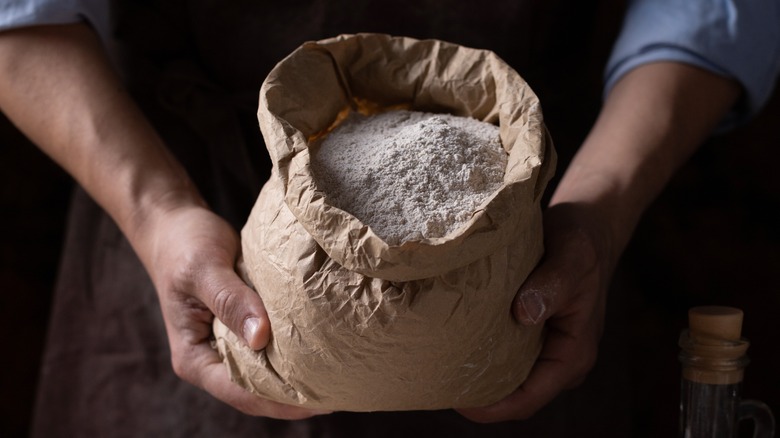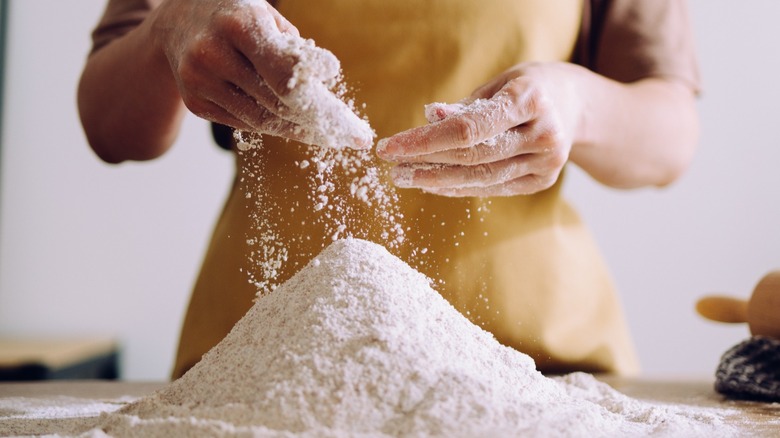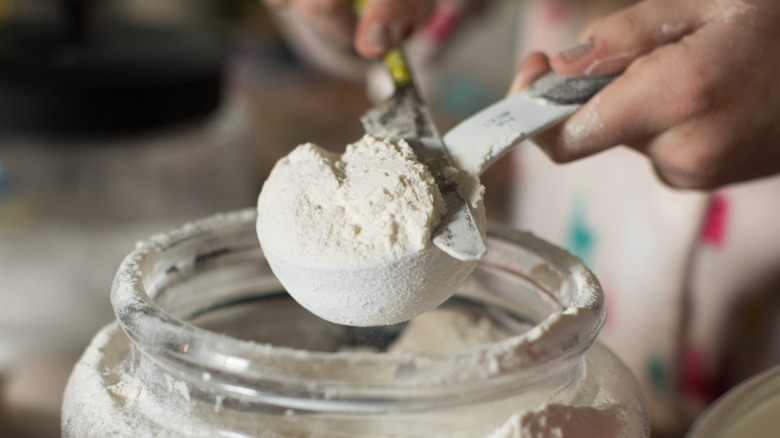What's The Difference Between Pastry Flour And Cake Flour?
When baking sweet treats in the kitchen, choosing the right kind of flour can have an impact on the outcome of your desserts. While all-purpose flour is generally a safe bet for most baking, some recipes may call for a different variety. If you have both cake flour and pastry flour on hand, you may find yourself wondering if the two can be swapped for one another, and what the differences are.
In short, the flours should be used for the desserts they're named for. Pastry flour is typically better for creating flaky treats, like croissants or pie crust. It can also be used for baked goods like cookies and muffins, if you prefer an airier texture, though it may make the treats a little crumbly.
Cake flour, on the other hand, is better suited for baking desserts like pound cakes or cupcakes. While the flour still provides a light texture, it's a little more structured than pastry flour, so the baked goods can better handle a generous frosting.
The textures of pastry and cake flours are different
The difference in textures between pastry flour and cake flour, which are both bleached flours, can also be noticed before baking, though both are fairly soft and finely ground. Pastry flour is a little more structured than cake flour and absorbs less liquid to hold up on its own. Cake flour is extra fine and soft, and is made from a softer wheat.
Cake and pastry flour are similar in the sense that neither of the two has a high gluten content, so they shouldn't be used to bake things like bread or pizza dough. Both of those require gluten production to take on a stretchy texture while kneading, and it can assist with rising while proofing and baking. The big difference, however, is that pastry flour has around 8% protein content, while cake flour only has 6%.
If you start baking some sweet treats and find that you only have either pastry or cake flour on hand (not both), you may be able to swap one for the other, with one extra addition.
Can the flours substitute one another?
Fortunately, if you only have one kind of these flours on hand, they can be swapped for one another in a pinch. However, they may not work as well at a 1:1 ratio. Instead, measure out half of the needed flour. Then, add the other half of the required amount in the form of all-purpose flour before combining the blend into the recipe.
Alternatively, you can also measure out a "scant cup" of the substituted cake flour. For every cup of flour needed, remove two tablespoons, and replace them with cornstarch. The added cornstarch can help baked goods take on a more crumbly texture that would otherwise be achieved using pastry or cake flour. This is done by softening the flour's proteins, according to Bob's Red Mill.
Both pastry and cake flour are easily found in the baking aisle at grocery stores. So while they can be swapped for one another in a pinch, there are good reasons behind their differences, and you should use the correct kind whenever possible.


